A healthy betta fish needs a proper diet. This includes not only quality foods that are formulated for your betta’s nutritional needs but also the right amount of food at regular intervals.
Also, because we love our aquatic pets, do not forget the occasional treat!
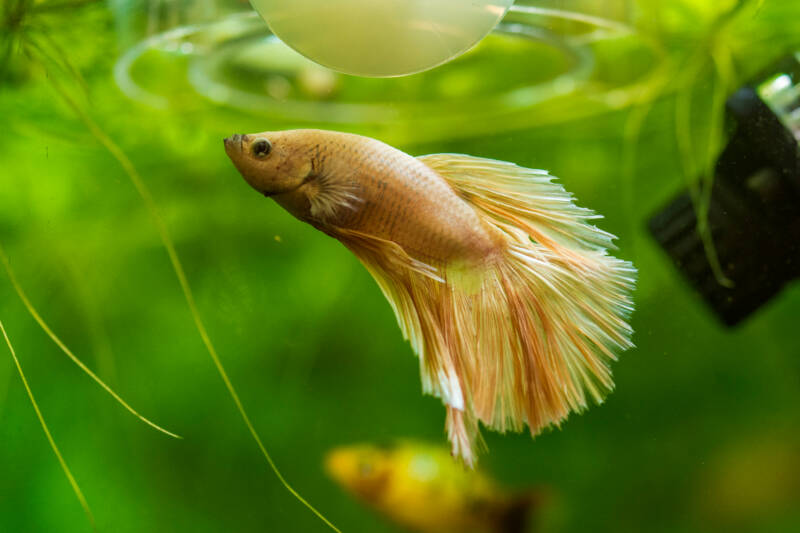
Below, we discuss the basics of what to feed your betta, how often, and what kinds of food are best.
[toc]
First Things First
Betta fish are tropical, warm water fish with a high rate of metabolism.
As a result of their natural environment, coupled with the energy expended hefting their ornate finnage through the water, they burn through calories quickly and need to replenish them throughout the day.
These fish are also surface feeders. In the wild, they routinely seek insects on the water surface as a food source.
This behavior will affect the types of food you can feed your fish as quickly sinking foods may be ignored.
Set Up the Tank for Optimum Metabolism
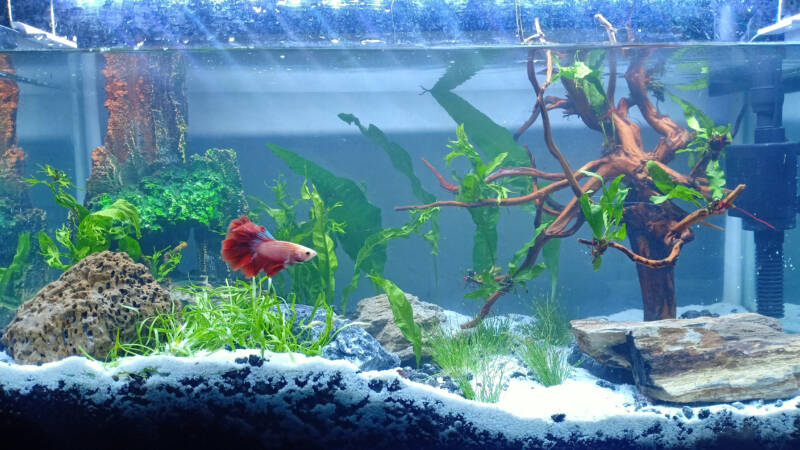
To keep your betta at their healthiest, you must first provide the ideal environment for them.
The right water temperature and conditions will allow them to digest their food properly. This means a lower chance of them developing digestive issues.
Water Temperature
Always install a quality water heater and thermometer in a betta tank to keep the temperature in the optimum range.
Smaller tanks or those placed near windows in direct sunlight can have rapidly fluctuating temperatures, which can impair your betta’s ability to properly digest food.
The water should remain steady between 76 and 80°F (24 to 26°C). If the temperature remains below 76°F or above 85°F for a long time, your betta may be harmed.
Low temperatures will slow down your betta’s metabolism, which can result in blocked digestive tracts or bloating.
Water Conditions
Monitor your tank regularly and set a schedule for cleaning the tank, performing partial water changes, and testing the water.
These activities will help ensure that nitrite, nitrate, and ammonia levels do not exceed the parameters tolerated by your betta fish. This will result in a healthier, less stressed fish that is more likely to eat.
If you habitually overfeed your fish, nitrite, nitrate, and ammonia levels can rise in the tank.
Nitrate levels exceeding 20 ppm can sicken or kill your fish. Keep nitrites lower than 0.25 ppm.
Ammonia levels should never rise higher than 1 ppm; in fact, 0 ppm is the ideal.
What Should I Feed My Betta Fish?
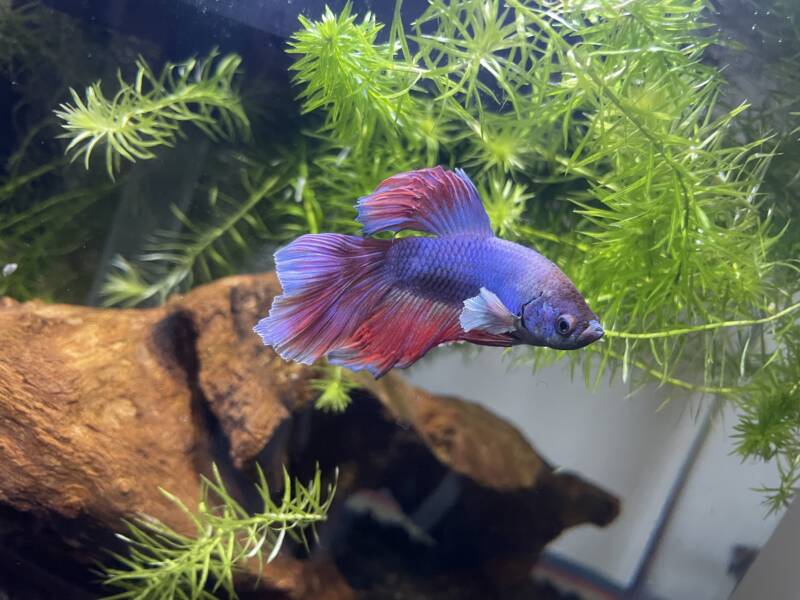
Betta fish are omnivores but need a diet that is slightly higher in protein, around 35 percent of their caloric intake. Protein can come from both animal and plant sources.
Start with high-quality pellets that are recommended specifically for betta fish. These betta pellets will have the ideal nutrient mix for your fish.
Plus, they do not sink to the tank bottom, allowing your betta to exhibit its natural feeding behavior on the water surface.
Supplementation and Treats
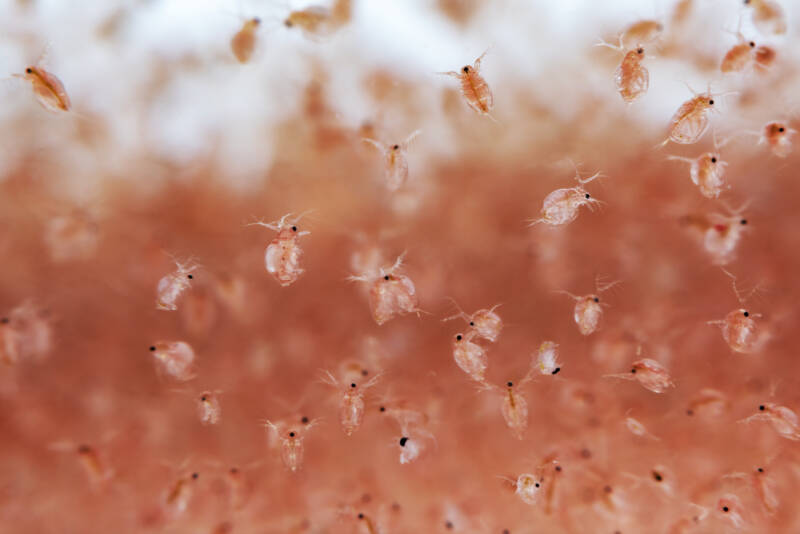
In addition, your fish will enjoy the occasional live or frozen treat. These should be given only on occasion as betta fish receive most of their nutrients through their pellets.
Treating your betta once or twice weekly will be plenty.
Bettas will eat a variety of protein-rich treats. An excellent option is mysis shrimp or daphnia, which are high in fiber and beneficial for your betta’s digestive tract. Plus, betta fish enjoy and will readily devour them.
Other live foods, such as mosquito larvae, will encourage your betta’s natural hunting behaviors.
Always purchase live food from a reputable seller. These products can contain harmful bacteria or parasites if they are of poor quality.
The treats do not have to be live to be beneficial. Foods that are freeze dried or frozen are also acceptable.
Consider frozen bloodworms or brine shrimp to provide a rich source of protein, iron, and vitamins.
Freeze-dried foods should be a less frequent treat. Alternate this food source with others, such as frozen or live, and always soak freeze-dried foods prior to feeding them to your betta to prevent bloating.
Homemade Treats
You can feed your betta food using healthy ingredients you already have in your kitchen.
Foods such as soybeans, eggs, seafood, and vegetables can be cooked or blanched, then baked, frozen, or cut up to provide a rich nutrient source for your betta.
How Much Should I Feed My Betta Fish?
These small fish do not need much. Look at your betta’s pellet food.
A quick way to tell how much to feed your fish is to imagine the number of pellets it would take to equal one of your fish’s eyes. For most, this equates to only two or three pellets.
Feed your fish this amount in the morning and the same in the evening.
Do not overfeed your fish, as this can leave them lethargic, bloated, or constipated.
Overfeeding presents an additional problem. Excess food will sink to the bottom of the tank and decay, resulting in degraded water quality.
In small betta tanks, these shifts in water conditions can harm your fish.
How Often Should I Feed Them?
Due to their high metabolism, you cannot get by on a single daily feeding and expect them to be healthy.
Feed your betta fish twice a day to allow sufficient space between meals for their body to absorb the nutrients from their food.
Give your betta a treat once or twice a week. Treats should be nutrient dense and rich in protein. Giving these treats less frequently will help prevent overfeeding.
Keep the Food Fresh
Unfortunately, the containers betta pellets come in typically have more pellets than a single betta can consume before they expire.
Over time, the pellets degrade nutritionally and will be lower in key nutrients, such as vitamin C. For the optimum health of your fish, discard and replace the pellets every six months.
How Do I Feed My Fish if They are Breeding?
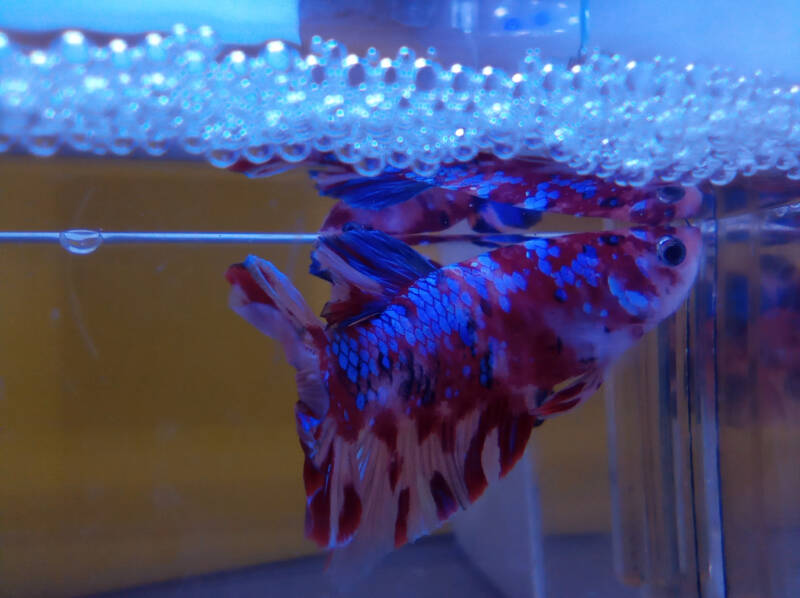
If you are breeding your betta fish, you will want to increase the amount of protein-rich, live foods in their diet.
Bump up the number of feedings to between two to four per day. Include foods such as bloodworms, daphnia, or tubifex.
What Do I Feed the Fry?
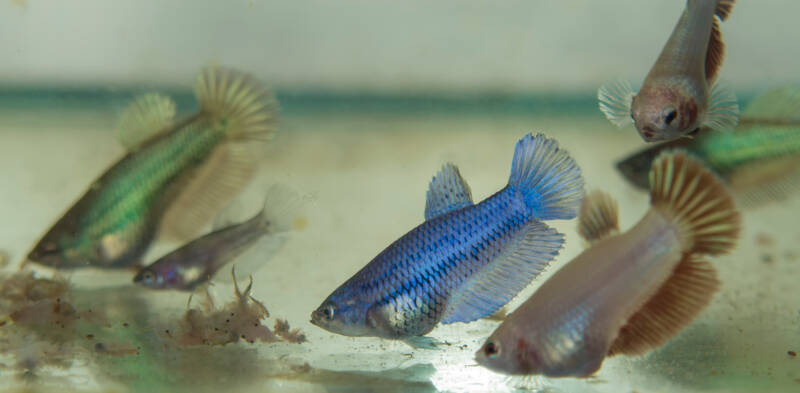
Betta fry have changing needs for feeding during their first few weeks of life.
For the first three to four days, they get all their nutrients from their egg sac. After that time, you can feed them infusoria for the next few days.
They can then transition to baby brine shrimp until they are three to four weeks old.
Then, they are large enough to accept frozen or freeze-dried foods as well as live food and pellets.
Closing Thoughts
Healthy food and a proper diet are just as important for your betta fish as they are for you.
Invest in your fish buddy as you would for yourself. Get the high-quality, nutrient-rich foods and feed them on a schedule that allows their bodies to make full use of the nutrients.
Avoid overfeeding them but treat them every so often with a special food. Bon appetite!
Now it’s your turn! Let us know your favorite treats to feed your betta fish.
